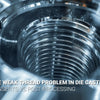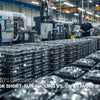CNC Turning: The Ultimate Guide to Precision Manufacturing
CNC Turning: The Ultimate Guide to Precision Manufacturing


Table of Contents:
- What is CNC Turning?
- Key Components of CNC Turning Machines
- Common Operations in CNC Turning
- Types of CNC Turning Centers
- Applications Across Industries
- Advantages of CNC Turning
- Challenges and Limitations of CNC Turning
- Future Trends in CNC Turning Technology
- Recommended External Resources
- Partner with Hotean Industry: Your CNC Turning Expert
What is CNC Turning?
CNC (Computer Numerical Control) turning is a revolutionary manufacturing process that utilizes computer-controlled machines to produce precise cylindrical components by systematically removing material from a rotating workpiece. This innovative technology has transformed modern manufacturing by enhancing accuracy, efficiency, and complexity in part production.
Key Components of CNC Turning Machines
Understanding the core elements of CNC turning machines is crucial for appreciating their sophisticated functionality:
- Headstock: The critical component that houses the spindle responsible for rotating the workpiece with exceptional precision.
- Tailstock: Provides essential support for the opposite end of the workpiece during machining operations.
- Tooling Systems: Includes advanced turret or gang tooling setups enabling diverse cutting operations.
Common Operations in CNC Turning
CNC lathes perform multiple sophisticated machining operations, including:
- Facing: Creating smooth, perfectly perpendicular end surfaces on workpieces.
- Threading: Generating precise screw threads with exceptional uniformity.
- Boring: Enlarging and refining existing holes to exact dimensional specifications.
Types of CNC Turning Centers
CNC technology offers versatile turning center configurations to suit various manufacturing requirements:
- Horizontal Turning Centers: Designed for optimal chip management through gravity-assisted falling.
- Vertical Turning Centers: Ideal for applications with spatial constraints.
- Inverted Vertical Turning Centers: Feature unique spindle and chuck arrangements for specialized machining needs.
Applications Across Industries
CNC turning's versatility enables its deployment across multiple critical sectors:
- Automotive: Manufacturing precision components like shafts and connectors
- Aerospace: Producing mission-critical parts requiring exceptional precision
- Medical Devices: Creating specialized instruments with exact specifications
Advantages of CNC Turning
The benefits of implementing CNC turning technology are substantial:
- Unparalleled precision and consistent repeatability
- Accelerated production speeds
- Capability to manufacture intricate geometries effortlessly
Challenges and Limitations of CNC Turning
While incredibly powerful, CNC turning does present some considerations:
- Higher initial setup and equipment investments
- Requirement for specialized programming expertise
- Continuous training and skill development needs
"Advanced technology demands advanced skills. Invest in training to maximize CNC turning potential." - Hotean Industry Experts
Future Trends in CNC Turning Technology
The horizon of CNC turning looks promising with emerging innovations:
- Enhanced robotics integration
- Advanced programming software development
- Expanding material machining capabilities
Partner with Hotean Industry: Your CNC Turning Expert
Ready to transform your manufacturing capabilities? Hotean Industry stands at the forefront of precision CNC turning technology. Our comprehensive services, cutting-edge equipment, and deep industry expertise ensure your project's success.
Take the Next Step:
- 📞 Call us for a FREE consultation
- 📧 Email your project specifications
- 🌐 Request a custom quote tailored to your needs





